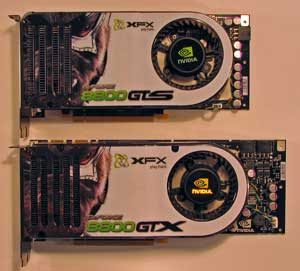The problem was extreme power requiremants, not yields.
Those are closely related.
This argument is groundless. Yield issues were never mentioned in relation to R600, there were no problems with R600 supplies and both performance and cost-down derivates had good OC headroom.
Regardless, they aren't salvage parts. They can be compared to 8800GTX/Ultra, not GTS.
This is the same argument as saying, that G80 yields were probably bad, because majority of the GPU was clocked to 1500MHz to stay competitive
That doesn't make sense, because G80 wasn't the one trying to compete.
2900XT was supposed to equal or outperform G80, but fell well short of that goal. So getting the clockspeed as high as possible, at the cost of extreme power consumption was their alternative.
Sorry, but GeForce 8800 GTS used the same (384bit) PCB as GTX.
8800GTS PCBs are smaller than the GTX/Ultra ones:

Regardless, it doesn't change the argument. 384 bit is still considerably less than 512 bit.
